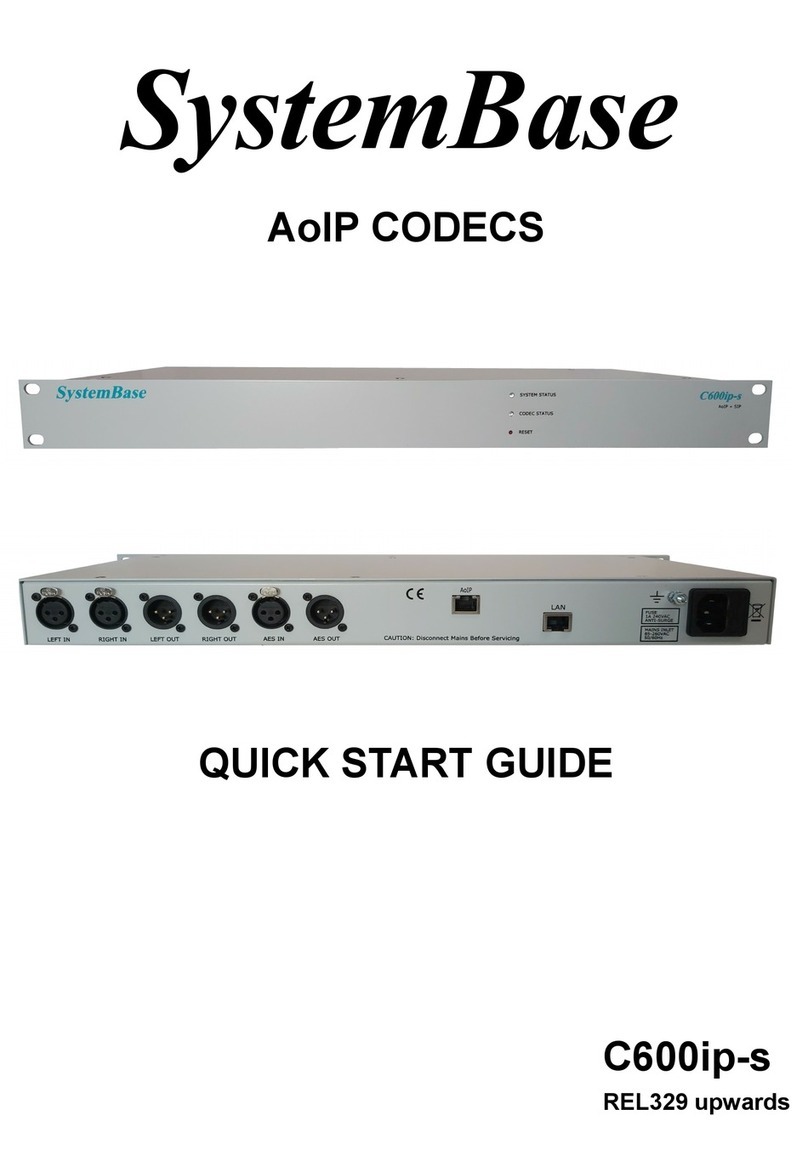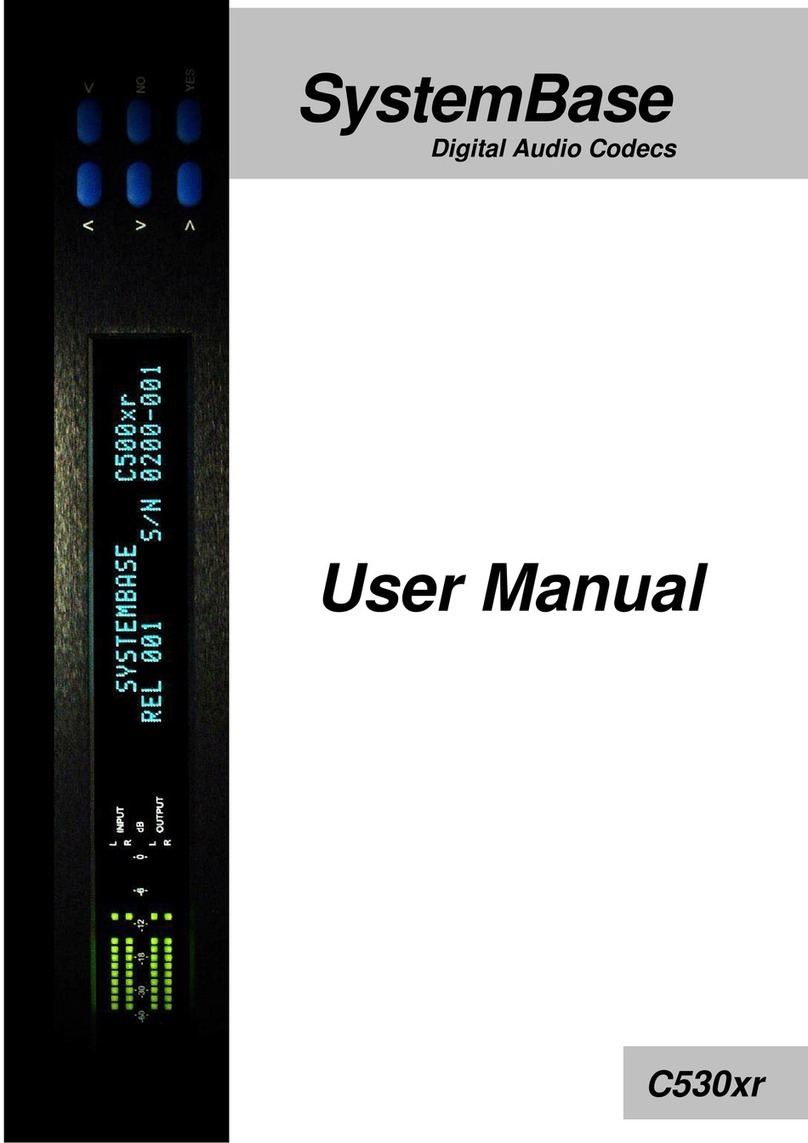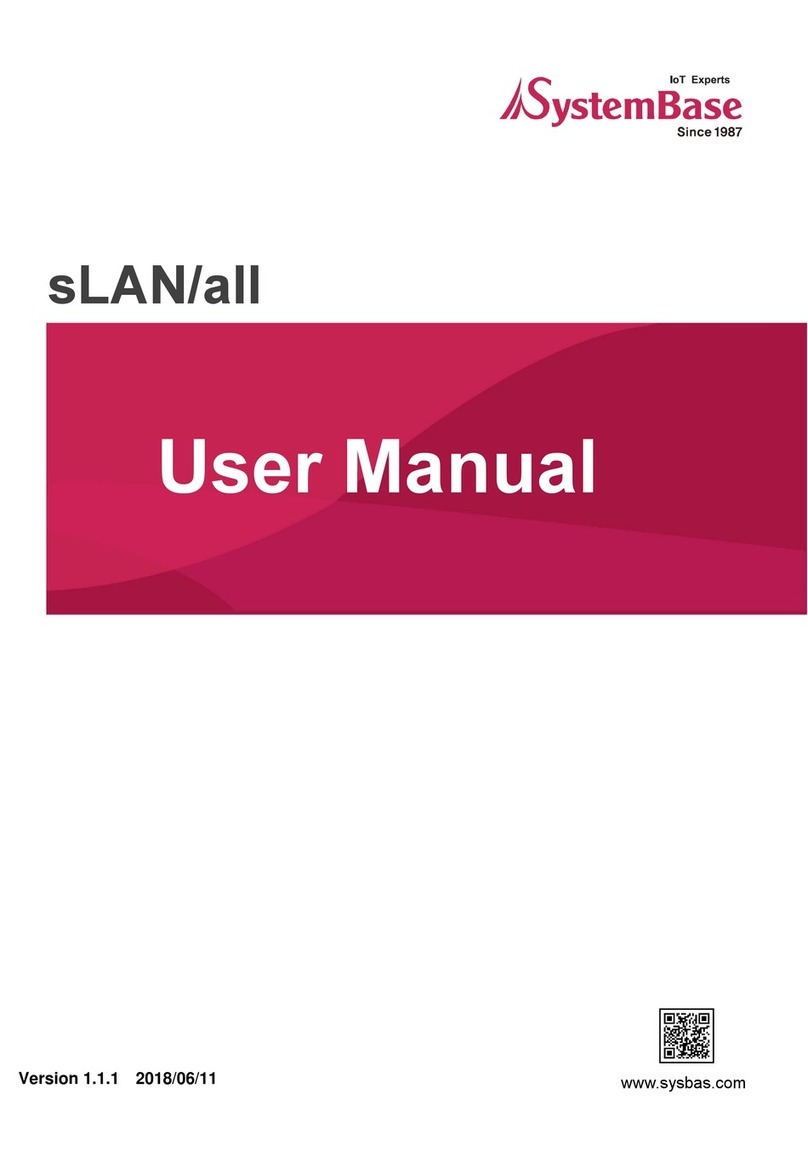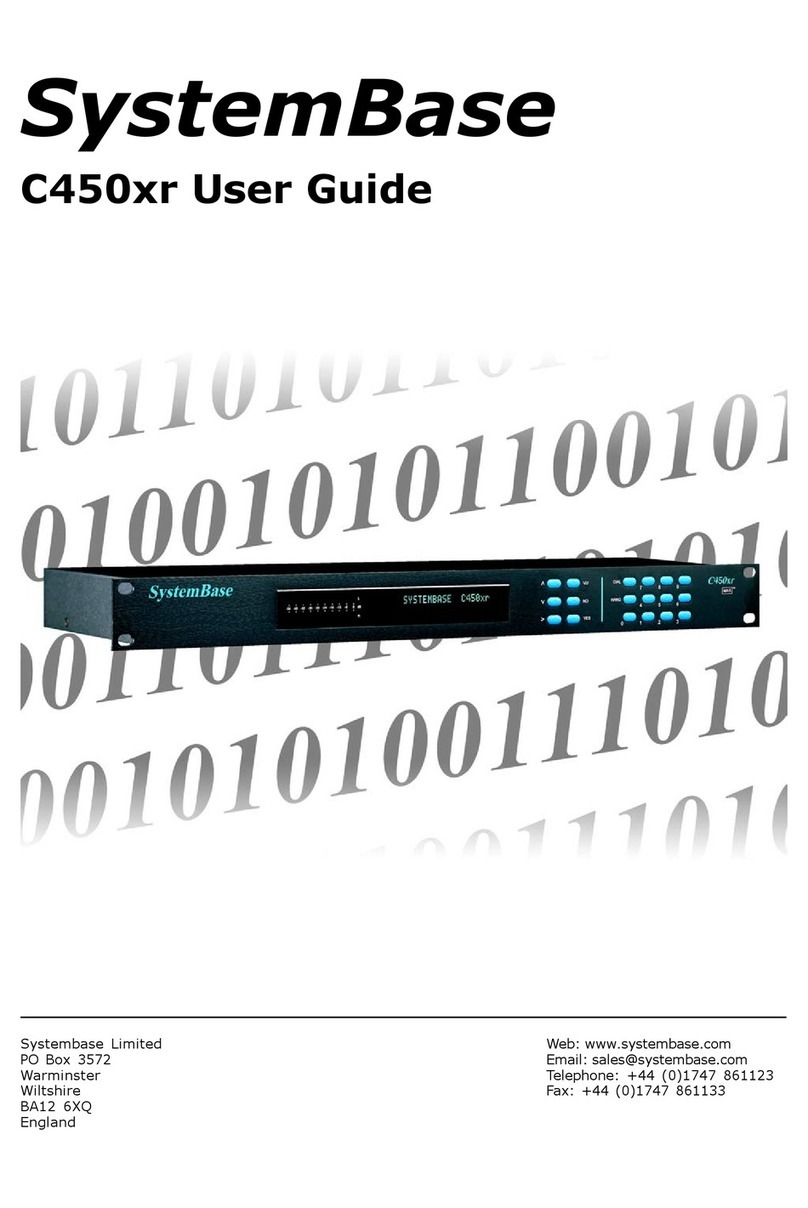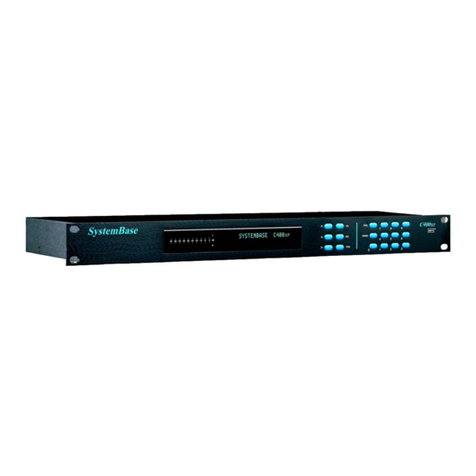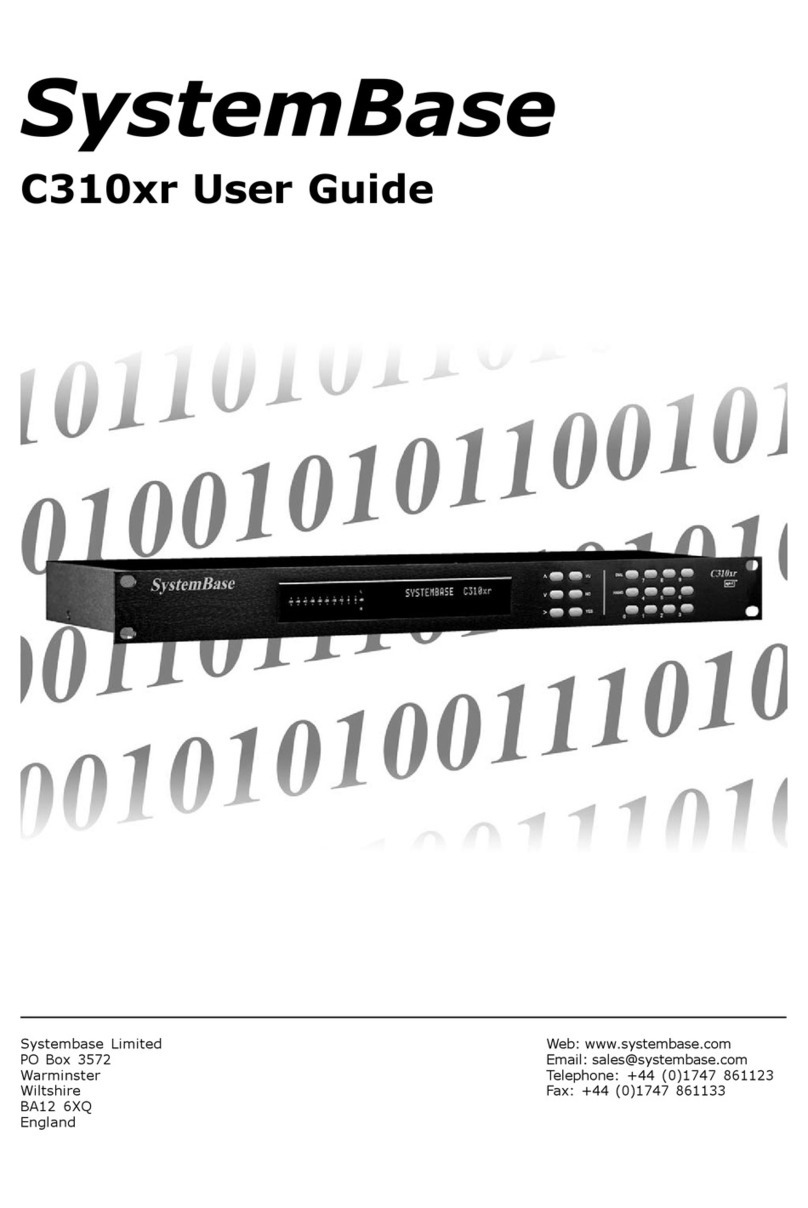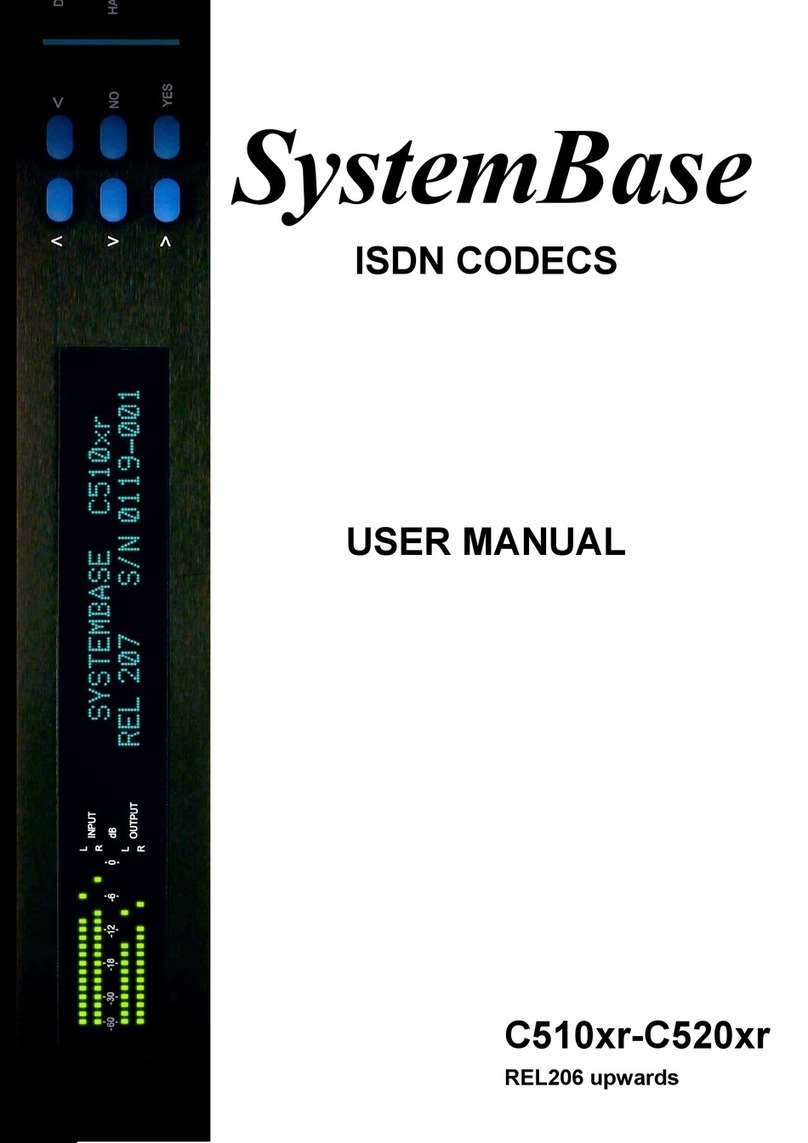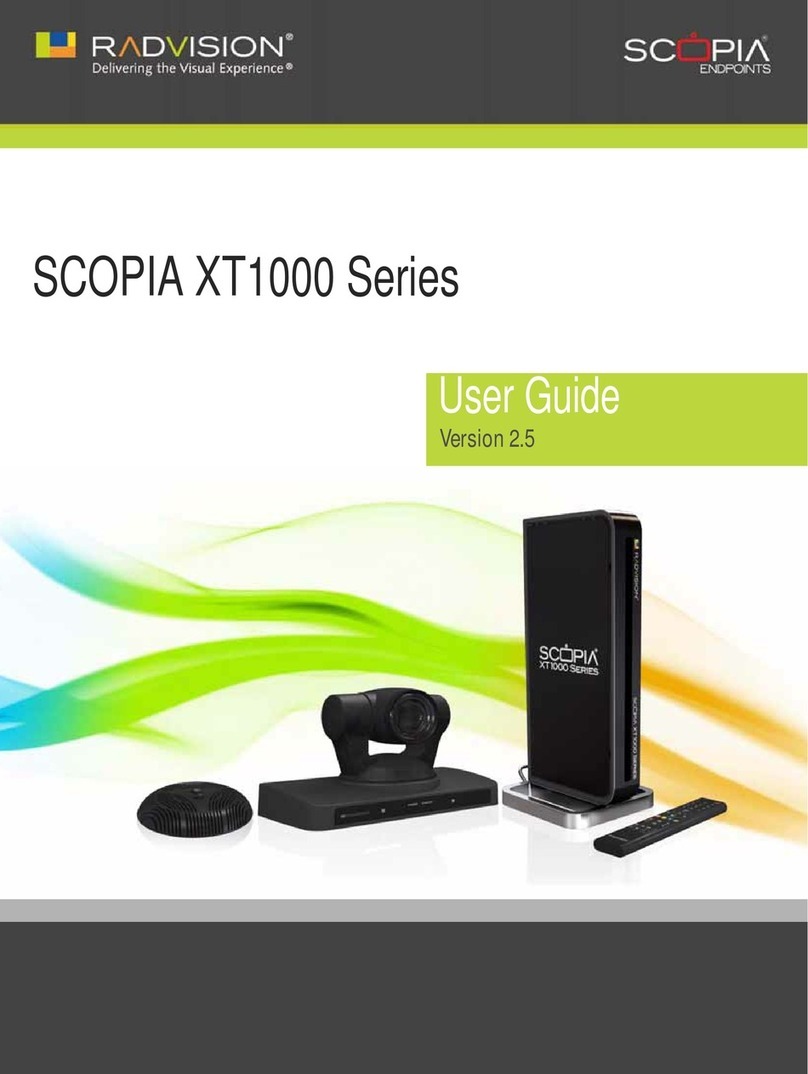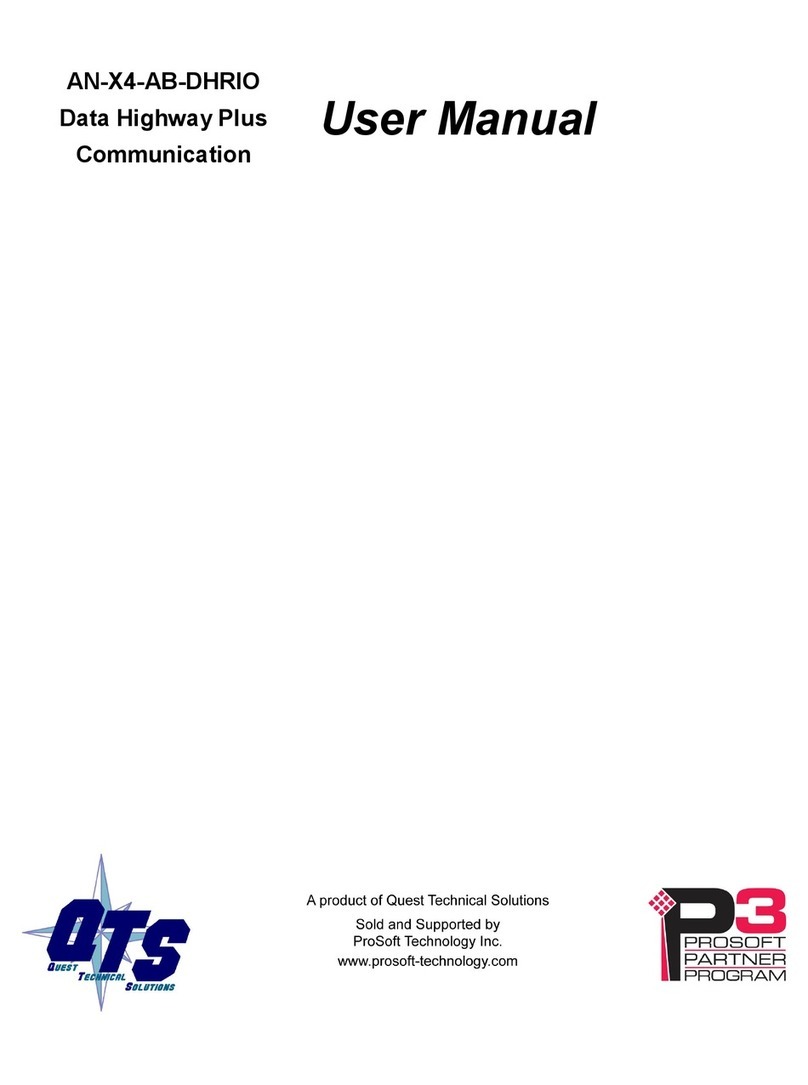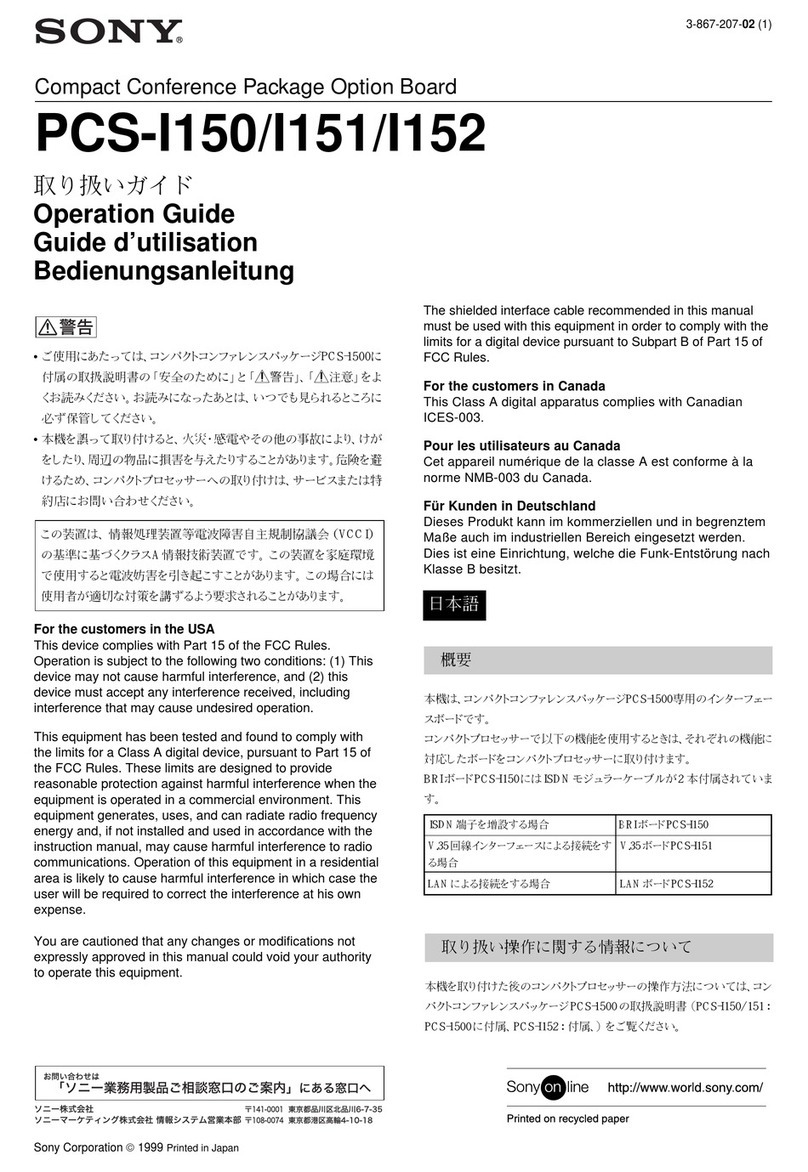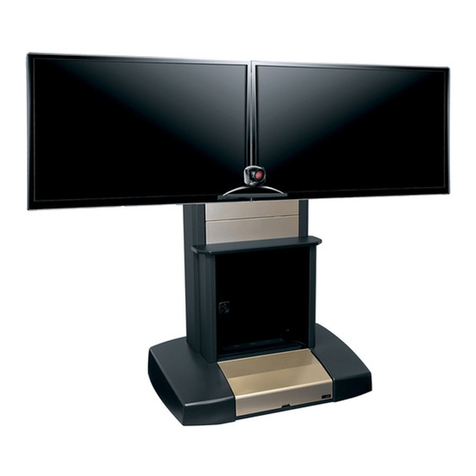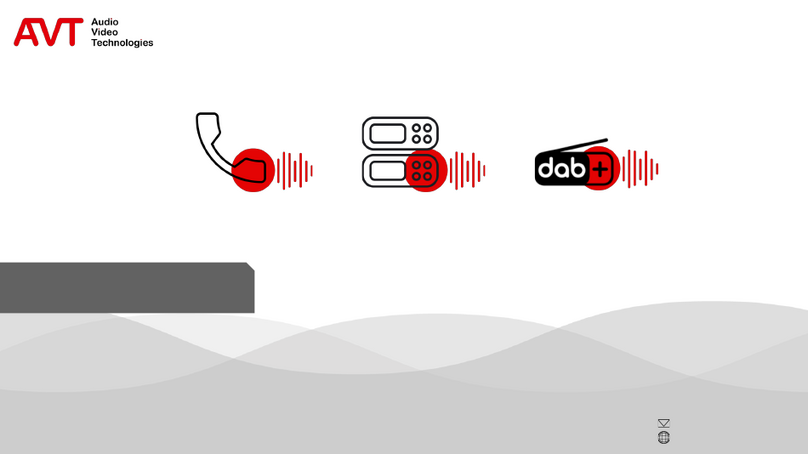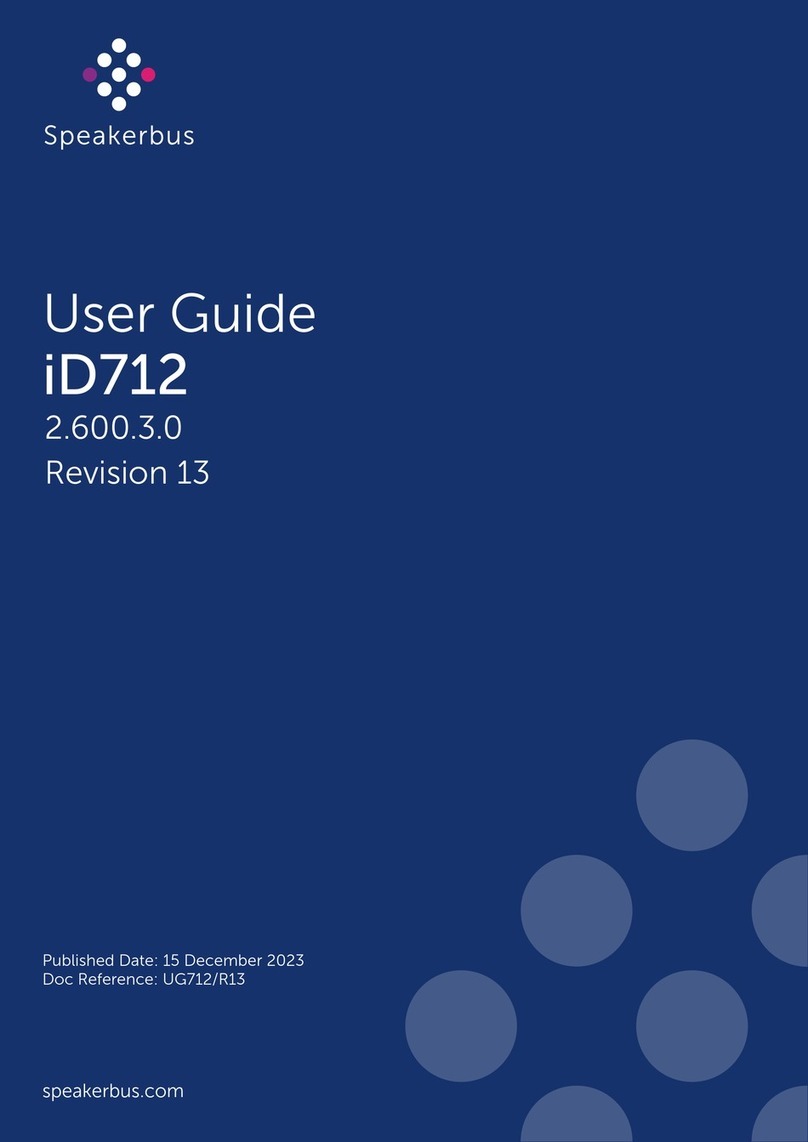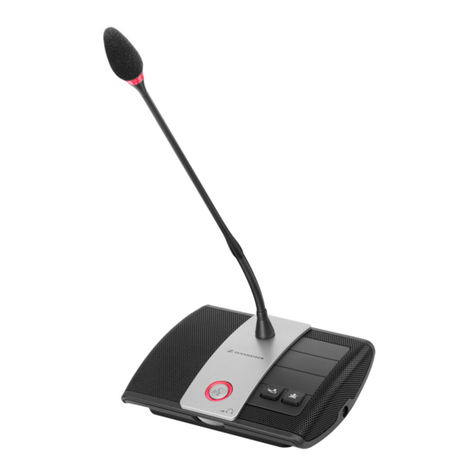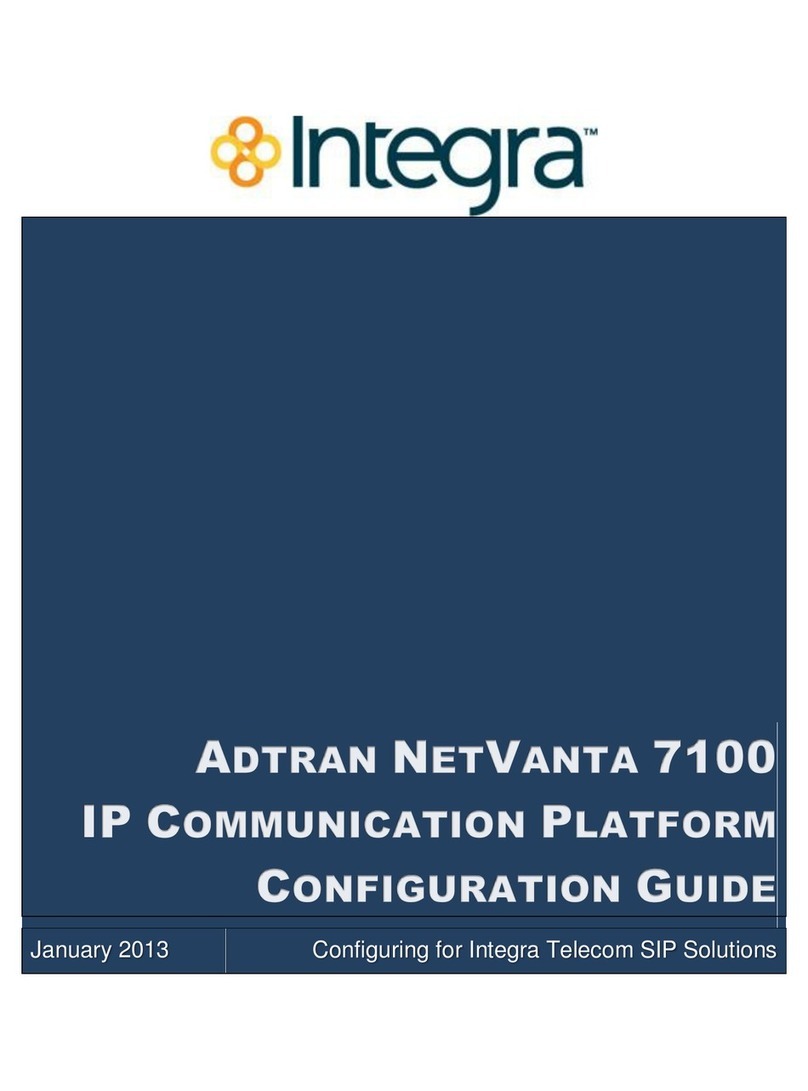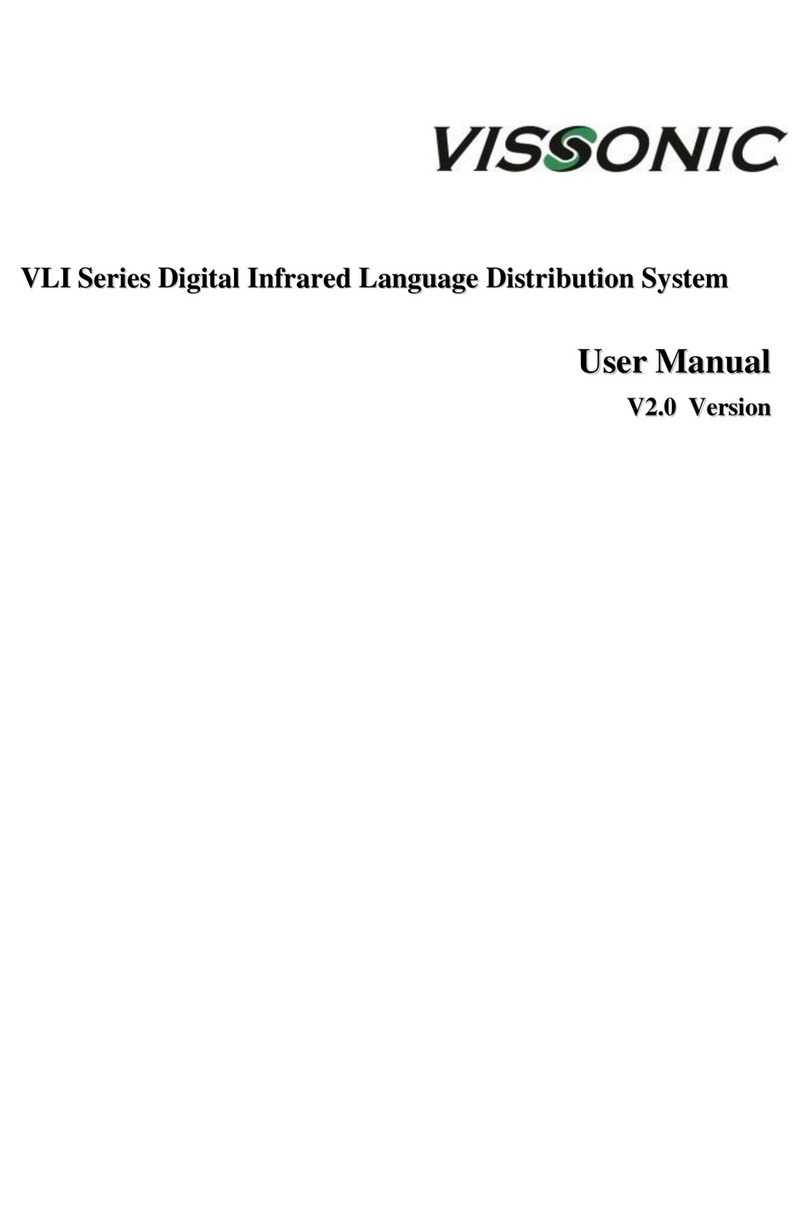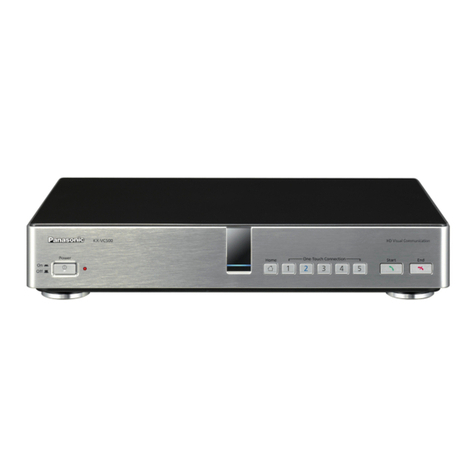
Page 2
Table f C ntents
INTRODUCTION.............................3
Key Features.................................3
INSTALLATION..............................4
CONTROLS AND INDICATORS....4
VFD Display..................................4
VU Meters.....................................4
Menu Buttons................................4
DIAL Button...................................4
HANG Button................................4
Numerical - 9 Buttons................4
FRONT & REAR PANELS.............5
MENU MAP.....................................6
IP MENU MAP................................7
MENU SYSTEM..............................8
Unit Description / Title...................8
IP Link Status................................8
Audio Status..................................8
IP Options.....................................8
IP Re mote Optio n s ..................8
IP Link 1..6 Op tio n s .........8
IP Link 1 Address..............8
IP Link 1 Algorithm...........9
IP Link 1 Format................9
IP Link 1 Sample Rate.......9
IP Link 1 Mode..................9
IP Link 1 F C....................9
IP Link 1 AutoCon.............9
IP Loc al Optio n s ......................9
IP Local Na m e.....................9
IP Local Addres s .............1 0
IP Local Ma s k ...................1 0
IP Local Gateway............1 0
IP Port.................................10
IP Auto B uffer..................1 0
IP B uffer Lengt h ..............1 0
IP Gro u p ID......................1 0
IP DHCP.............................1 0
IP thernet Mode.............11
IP Packet Size..................11
SIP Remote Port..............11
SIP Local Port..................11
SIP Audio Port.................11
SIP Public IP....................11
X21 Audio....................................11
Backup Options...........................11
Back u p Mo nitor....................1 1
Back u p Thre s hold................1 2
Res to re Tim e..........................1 2
Audio Source...............................12
Codec Function...........................12
IP Mode....................................1 2
X21 Mode................................1 2
Bac k u p Ma ster X21->IP /
Slave X21->IP........................1 2
Auxiliary Data Port......................12
Alarm...........................................12
Headroom...................................13
System Options...........................13
P a s swo rd .................................1 3
Loop b ac k .................................1 3
SNMP........................................1 3
t h er n et Optio n s ..................1 3
t h e r n e t DHCP................1 3
IP Ad dr e s s.........................1 3
t h e r n e t Ma sk .................1 3
t h e r n e t Gatew ay...........1 3
Set Defa ults............................1 3
Screen Saver..........................1 4
Email Alert Messages.................14
m ail Timi ng.........................1 4
SIP.................................................15
Local Con n e ctio n s................1 5
SIP Server...............................1 5
SIP Tr u n k Provider..............1 5
SIP Registr a tio n ....................1 5
EASYMON NETWORK MONITOR
..............................................................16
WEB SERVER..............................17
REMOTE MANAGEMENT...........18
PHYSICAL CONNECTIONS........19
Analogue Audio...........................19
Digital Audio................................19
LAN Port......................................19
IP Port (ISDN 3-4).......................19
X.21 Port.....................................19
Manager Input Port.....................2
Manager Output Port..................2
Auxiliary Data Port......................2
Alar m Sig n al..........................2 0
PHYSICAL PROPERTIES............21
Dimensions.................................21
Power Requirements..................21
Environmental Conditions...........21
WARRANTY INFORMATION.......21
CE COMPLIANCE........................21
EXPORT REGULATIONS (EAR). 21
